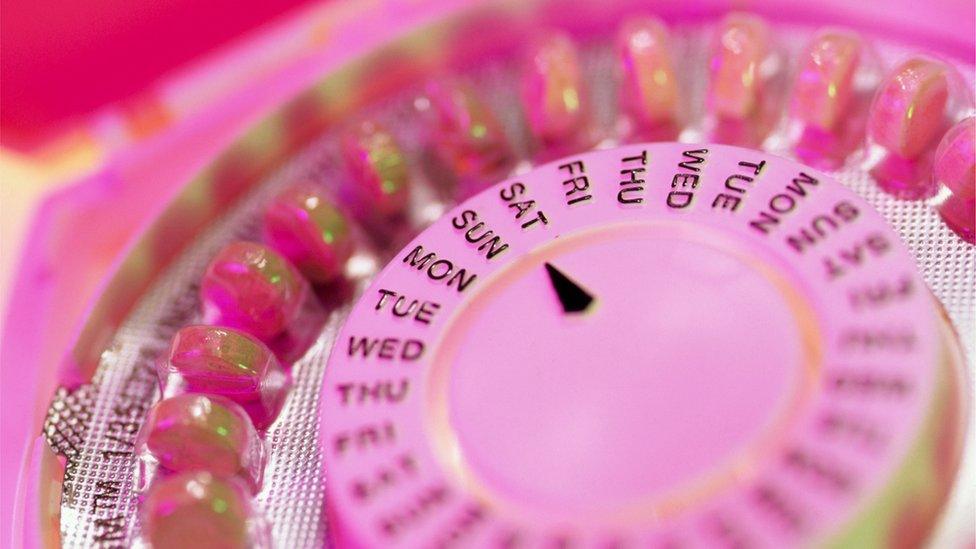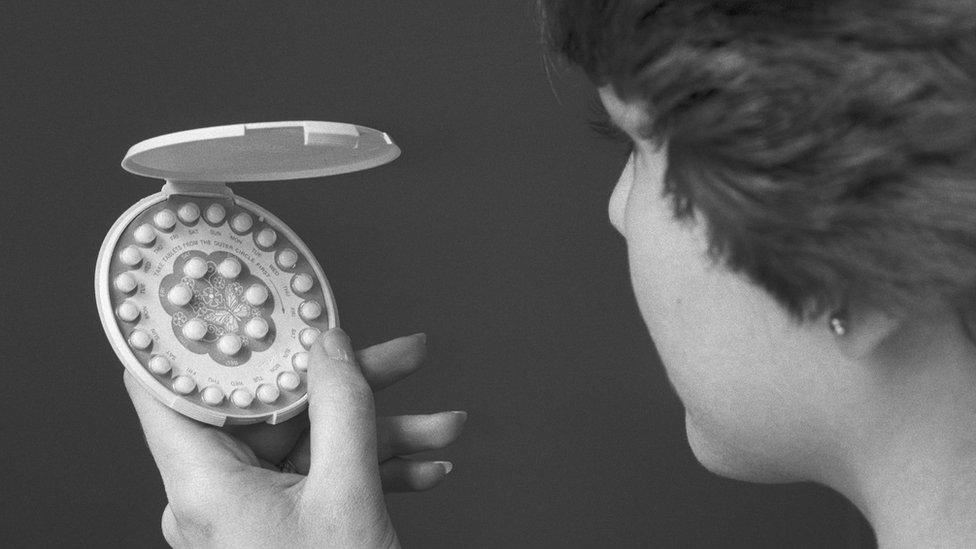How risky is the contraceptive pill?
- Published

A recent study linked the contraceptive pill with depression. It's the latest supposed side-effect to attract headlines. But poorly interpreted statistics might pose a bigger risk for women, says Elizabeth Cassin.
According to the World Health Organization, more than 100 million women around the world use the combined oral contraceptive - better known as the pill.
Many of its potential side-effects have been well documented since its release in the 1960s. But recently, a study claimed to have established a link between depression and the pill.
Danish researchers looked at the medical records of more than one million women with no prior history of depression aged 15 to 34.
They found that, compared to non-users, those who took the pill were more likely to receive a prescription for anti-depressants at a later stage, or to be diagnosed with depression in a hospital.
The study made headlines around the world. "Are YOU on the Pill? You're more likely to be depressed: Women who use contraception are up to 70 per cent more likely to be on antidepressants," said one newspaper. "The Pill has been linked to depression. Why isn't this more of a scandal?" said another.

However, according to Phil Hannaford, professor of primary care at the University of Aberdeen, it only showed "very small effects, if they are there".
For every 100 women not using the pill, 1.7 each year were given anti-depressants. Whereas for every 100 women using the pill, the figure was only slightly higher at 2.2.
It's not a huge difference, in Hannaford's view. "The difference between those two groups is 0.5, so one per every 200 women-years," he says.
Although this showed a statistical association, it didn't necessarily show a causal link, because there could be other factors at play, he says.
"For instance, the women who are using the pill may have had a breakdown in their relationship with their partner. That could have led to depression and being given an anti-depressant."
This kind of study is good for generating a hypothesis, but not for testing a causal link, Hannaford says.
To do that, he says, you would need a large randomised trial - which is where you take one group and give them the treatment that you suspect might be causing the problem and another group a placebo.
This would be impossible - not to mention unethical - as the women taking the placebo could believe they were covered by birth control and not take other precautions.

Find out more
More or Less is broadcast on BBC Radio 4 and the World Service
Download the More or Less podcast
More stories from More or Less

Depression isn't the only side-effect discussed in relation to the pill.
The rare side-effect which has received the most attention is the risk of blood clots, which are potentially fatal.
But when these risks are poorly understood, there are consequences.
Prof Gerd Gigerenzer, director of the Harding Center for Risk Literacy in Berlin, says "the UK has many traditions, one of them being the contraceptive pill scare. Since the early 1960s, women are alarmed every couple of years that when taking the pill, this can lead to thrombosis - potentially life-threatening blood clots."
In 1995, The UK Committee on the Safety of Medicines issued a warning, external and held an emergency press conference, to report on a study which showed that the third generation of contraceptive pills increased risk of thrombosis "two-fold".
"Alarm bells rang across the country," says Gigerenzer.
The scare led to some women coming off their contraceptive. And it's been estimated that, in 1996, there were 12,400 additional births and 13,600 additional abortions.
"Here's an instance where lack of statistical literacy - that is to understand the difference between a relative and an absolute risk - leads to emotional reactions, which then in turn do harm to the women themselves," Gigerenzer says.

What, then, are the absolute risks? And how should women try to understand them?
A short film, external recently published on the Guardian website draws attention to the deaths of young women who died of blood clots while using combined hormonal contraceptives - which include the pill, patch and ring.
The video claims that if women understood the death rate, they would not take hormonal contraceptives - and that if you had 10,000 women who were using the ring, a few of them would die.
"It's not accurate to say that a few women in 10,000 will die," says Dr Sarah Hardman, Deputy Director at the Faculty of Sexual and Reproductive Healthcare.
"It is accurate to say that a few women in 10,000, probably between five and 12 in 10,000 will have clotting events - a vein thrombosis event. But not all of those women die. In fact, only about 1% of the women who have a clotting event die."
"So we're looking at maybe about three to 10 per million women dying as a result of having a clot that is attributable to use of their combined hormonal contraception."

If you're not on a hormonal contraception, and you're a woman of reproductive age, your risk is only about two in 10,000 women per year.
But of course, coming off the pill to avoid blood clots increases your likelihood of getting pregnant. And pregnancy itself increases the risk of blood clots.
"If you're looking at women who are pregnant, it's about 29 per 10,000," says Hardman.
"And women who are in the post-partum period - in the weeks just after they have given birth - their risk is about 300-400 in 10,000."
In other words, having a baby is far more likely to produce blood clots than taking the pill.
And the pill can be very effective in preventing pregnancy. For women, the only methods more effective are IUDs, implants and sterilisation.

Join the conversation - find us on Facebook, external, Instagram, external, Snapchat , externaland Twitter, external.